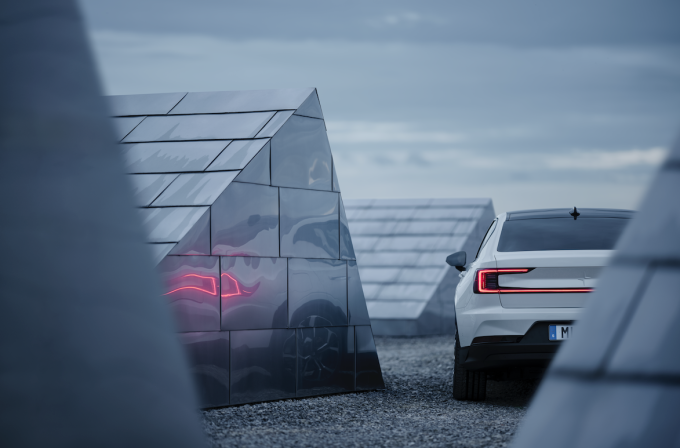The perception of electric vehicles is changing, thanks to expanding charging infrastructure, impressive mileage and new models that promise sustainability without compromise.
Ask most petrol and diesel drivers what puts them off electric vehicles (EVs) and, in the end, it will probably come down to fear. They get the sustainability case. They love the prospect of those smooth, near silent motors. But they can’t shake the worry that joyful driving experiences will be undermined by nagging fears over flat batteries.
So the shift to universal sustainable mobility is, to some extent, an infrastructure issue. Or perhaps more accurately, it’s an infrastructure perception issue. Most EV charging happens at home or at work. If you need to charge on the road, the US Department of Energy lists over 28,000 Level 2 public charging stations on its website, and over 4,000 faster charging stations. In Europe, there are now 16 fast charging points for every 100km of highway. That infrastructure is growing all the time.
Open to change
So there’s plenty of capacity, but proprietary charging networks muddy the waters. These private networks, available only to the vehicles of a single manufacturer, are a tiny fraction of the total, but serve to sew confusion. A common sense approach to access is being championed by EV manufacturer Polestar who believe that open charging networks – available to any EV – are the best way to instill confidence in drivers and accelerate the democratization of clean motoring. It recently partnered with Plugsurfing, a network of over 195,000 charging points across Europe that doesn’t discriminate by make or model.

Still, public perception around EV infrastructure and range is changing, and new innovation will drive acceptance. With battery technology improving all the time, most EV drivers will only rarely use public charging points anyway. The new Polestar 2, for example, has a range of up to 292 miles (WLTP) on a single charge. And if you are caught short, it will guide you to the nearest charging point in the quickest possible time.
Integrated into your digital life
The Polestar 2 is the first car with Google built in, and the Maps app comes optimized for charging stations. The Polestar 2 even tells you if you’ve enough charge to get to your destination, and how much you’ll have left when you get there. Of course, with Google on board, that’s by no means all. Saying “Hey Google” lets you play music, send messages, check your calendar, change the temperature and even learn to say “thank you” in Klingon, all while on the move.

Apps aside (and there are scores more), that kind of long-range performance can help consumers make the leap to EVs, especially when you consider that most cars only travel around 40 miles a day. In the meantime, the wheels of innovation just keep turning. New battery technology is likely to see rapid charging of up to 200 miles of range in just ten minutes in the near future. And then there’s wireless charging, rolling out now, which starts charging your car automatically as soon as you pull into the driveway.
All this will help, but perhaps in the short term the EV revolution will be powered as much by a change in mindset as a leap in technology. Consumers will stop comparing charging to filling a petrol tank, and start seeing it as secondary to whatever else they happen to be doing. Most times that will mean sleeping – at home or in a hotel – or working. Occasionally it might mean shopping at the mall, writing emails in a coffee shop or having lunch on the highway. What was once considered the technology’s Achilles heel is in many ways a benefit. You can be juicing up your EV when you’re getting on with other things.
Designing away waste
Think of it that way and it becomes easy to see that sustainable mobility doesn’t have to involve compromise, and what’s true of range is also true of form. The Polestar 2 is a breathtaking car, showcasing a minimalist design that gives you everything you need and nothing you don’t. It’s safe, comfortable, connected, and a delight to drive. It is also a more sustainable choice.

That’s because a premium but sustainable design ethic is central to how it’s produced. Polestar recognizes it doesn’t always have all the answers, so it teams up with people who do. It recently collaborated with fashion house Balenciaga as it imagines a virtual urban landscape of 2031 complete with the Polestar Precept, a vision of sustainable near-future driving.
Lifetime carbon footprint
None of this is greenwashing. We accept that, while EVs obviously don’t produce tailpipe emissions, the level of emissions produced during the manufacturing process has been vague, at least until now. Manufacturers such as Polestar are looking to change that – putting it all out in the open. Starting with the Polestar 2, they’ll reveal the full lifetime carbon footprint of every new model they produce publishing a Life Cycle Assessment report. They see this as a way to accelerate the shift to cleaner mobility. When drivers see the real difference an EV can make, they’ll be more likely to choose one.
Don’t compromise
With the Polestar 2, it’s an easy choice to make. You don’t have to give up on good things to make a difference. You don’t have to give up on the road trips you love, however near or far they take you. Lots of petrol and diesel owners say they would drive an EV if it had the range, style, performance and features they really want. If you’re one of them, welcome to the new Polestar 2.
Say goodbye to petrol with the 100% electric Polestar 2. Built from the ground up as the sustainable future of driving, Polestar is leading the way in all-electric performance and uncompromising design with the award-winning Polestar 2. Find out more